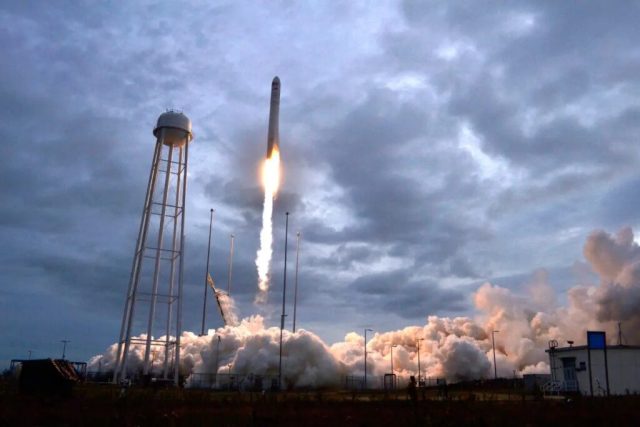The flight of the Cygnus unmanned spacecraft to the International Space Station was the finale of Russian-Ukrainian-American cooperation in the joint production of space rockets. The Antares carrier variant used to launch the "truck" can no longer exist. Instead, a new modification is being prepared, in which there will be no Russian engines and the first stage produced by Ukrainians.
The launch took place on Tuesday, August 1, at 20:31 summer North American Eastern time (03:31 Wednesday, August 2, Moscow time) from Pad-0A of the Mid-Atlantic Regional Spaceport (MARS). The Antares rocket in the 230+ configuration sent the Northrop Grumman NG-19 Cygnus cargo ship to the International Space Station.
There are more than 3,700 kilograms of scientific experiments, equipment, consumables and provisions on board. The last item includes a gift for the crew of the orbital laboratory from ground services — ice cream.
The previous Cygnus flight, the 18th mission, was not without adventures. The head fairing of the rocket separated not quite normally, and the element of vibroacoustic protection (a flexible "blanket" inside the fairing flaps) got into the lock of one of the two folding solar panels of the ship. Despite this problem, Cygnus was able to complete its task with a single solar panel and made it to the ISS. But further flights were in danger of disruption.
At the pre-launch conference of the NG-19 mission, a representative of Northrop Grumman told reporters that the incident was a pure accident. According to him, quoted by SpaceNews, all the equipment of the ship in the previous flight worked correctly and its design does not require modifications. According to the results of the investigation, the National Aeronautics and Space Administration of the United States (NASA) "gave the green light" to Cygnus NG-19.
 |
| NG Mission Launch-17 — 17- The first Cygnus flight to the ISS, February 2022. |
| Source: Dylan Slagle, Baltimore Sun Media Group |
This flight became a kind of swan song of the current modification of the Antares — 230+ carrier. Its first stage was developed and produced by the Ukrainian enterprise Yuzhmash. And Russian RD-181s were used as main engines.
Since the production cycle of space rockets takes years, this particular one involved in the NG-19 mission was assembled from components delivered long before February 2022. In today's geopolitical situation, such cooperation is not possible, so Antares 230+ will not be able to fly anymore.
Instead, the third generation of Antares with 33x indexes is being prepared. For him, the first stage is being developed by an American company with Ukrainian "roots" Firefly Aerospace. The RD-181 pair will be replaced by seven Miranda engines at once. Their total maximum thrust will be almost twice as much — 7.2 kilonewtons versus 3.8 kilonewtons. In the future, this means that the first stage of the updated carrier can become reusable, and will also provide an increase in its payload capacity from 8120 kilograms to more than 10 tons (for missions with the Cygnus spacecraft).
While the new version of Antares is in development, SpaceX Falcon 9 rockets have been chartered to launch the next three Cygnus missions.
The history of the Antares rocket is a curious example of international cooperation. In addition to the USA, Ukraine and Russia, Japan is directly involved in the project and indirectly — the USSR. Aerojet AJ26 engines were installed on the first Antares modification, carriers of the 100 series. These are Soviet NK-33s created for the lunar rocket N-1 half a century ago. They never flew into space, remaining in the warehouse. Aerojet Rocketdyne engineers tested the Soviet heritage on the stands and carried out a number of modifications, turning the NK-33 into an AJ26. A pair of these engines were installed on the first stage of the Antares 110 and 120 developed by Yuzhmash.
But a few seconds after the launch of the fifth Antares 100-series mission, one of the AJ26 collapsed, which resulted in the loss of the rocket and payload (Cygnus CRS Orb-3). The investigation showed that the defect occurred in the turbopump of the engine and none of the purchased NK-33 is insured against it. It was decided to switch to units fully manufactured in this century. So the 200th series was born — the first stage was adapted for the RD-181. It is also a Soviet heritage, but it is still being produced.
Japan's contribution to Antares is the engines of one of the variants of the optional third stage Bi—Propellant Third Stage (BTS): BT-4, designed for heavy satellites. They are also used on the Cygnus ship.

